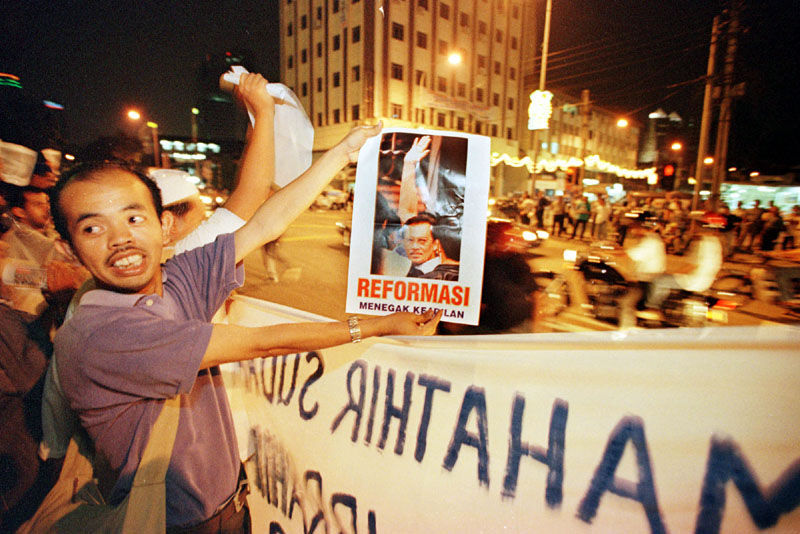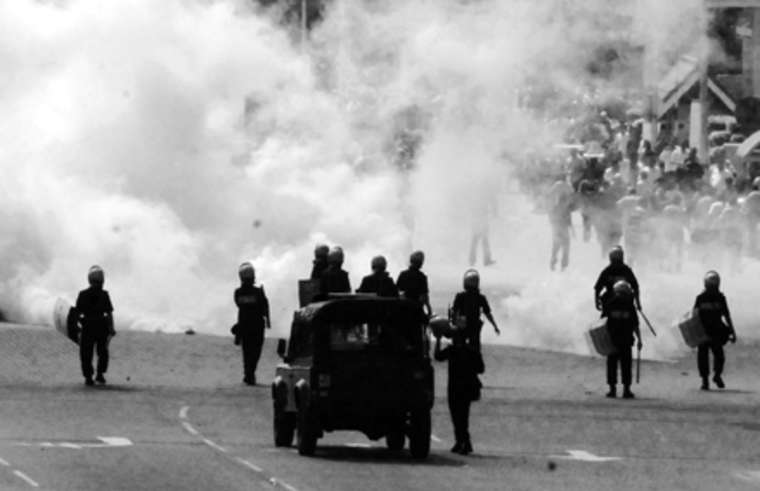Here we go again!
Three years after the mammoth Bersih 3.0 rally, the Coalition for Clean and Fair Elections (Bersih) has called for another rally. Dubbed Bersih 4.0, the two-day rally will be held on 29 & 30 August to call for the resignation of Prime Minister Najib Razak and clean governance in Malaysia.
While Malaysians gear up to take the streets, there are some who have strongly condemned street rallies, saying that public demonstrations are not part of Malaysia’s political culture.
But street rallies have, in one way or another, played an important role in shaping the country.
UMNO, for one, was founded as a sign of protest. The Universities and Universities Colleges Act (AUKU) of 1970, which forbids university and college students to participate in street rallies, was also a result of a mammoth rally.
Here are the stories behind some of our country’s biggest – and most iconic – street rallies.
1. The Malayan Union Rallies (1946)

Photo credit: Flickr
SO, WHAT HAPPENED? In 1946, UMNO founder Dato’ Seri Onn Jaafar organised and led one of the biggest mass demonstration of that time. Days after the British Allied forces landed in Singapore in 1945, the British Military Administration were looking to revive pre-war plans for centralised control over the Malay states. Sir Harold MacMichael, a British colonial administrator, was tasked to sign official treaties with the Sultans as part of the Malayan Union scheme. However, a majority of the Sultans were reluctant to sign the treaties, as it meant that the United Kingdom would have full administrative powers over the Malay states.
When frustrations boiled over, more than 50,000 Malays hit the streets to protest against MacMichael’s method of acquiring the Sultans’ signatures, as well as the reduction of their powers under the Malayan Union treaty. As the discontent picked up steam, Onn Jaafar founded UMNO as a means to rally the Malays against the Malayan Union. Under his leadership, UMNO organised several big rallies in several large towns such as Johor Bahru, Kelantan, Alor Setar, Kota Bharu and Alor Setar. During the rallies, the protesters wore white headbands to ‘mourn’ the loss of the Sultans’ political rights.

Photo credit: Wikipedia
WHAT HAPPENED NEXT? After the inauguration, UMNO continued to defy the Malayan Union. Using ‘civil disobedience’ as a means of protest, they refused to attend the installation ceremonies of the British governors or participate in the meetings of the Advisory Councils. With the Malayan Union recognising that they no longer have the support of the people, they disbanded in 1948.
2. The 1974 Baling Incident

Photo credit: Malaysian Digest
SO, WHAT HAPPENED? One of the most iconic street protests in Malaysia, the Baling Demonstration saw thousands of rubber tappers and university students taking to the streets in 1974 to protest against poverty. In the small town of Kedah, residents depended on rubber tapping as a means of income. When the global rubber prices collapsed, the rubber tappers struggled mightily to make ends meet. And when the media reported that several children died after eating ubi gadong, a type of poisonous wild yam, to stave off hunger pangs, the small town erupted.
Led by none other than the former Opposition leader Anwar Ibrahim, who was then a student activist, the street protest saw a crowd of almost 25,000 (although the exact number can’t really be ascertained) occupy the streets of Baling town. As a result, more than 1,000 students from Universiti Malaya, Universiti Kebangsaan Malaysia and Kolej Mara were arrested. As for Anwar, he was detained under the much-loathed ISA for two years.

Photo credit: Malaysian Digest
WHAT HAPPENED NEXT? The aftermath of the Baling Incident was tremendous; it caused a major shift in Malaysian politics and changed the landscape for public protests and freedom of speech in the country. As a result of the uprising, the Universities and Universities Colleges Act (AUKU) of 1970 was revised and strengthened to curb future protests by university students.
3) The 1988 Reformasi Movement

Photo credit: Bazuki.com
SO, WHAT HAPPENED? Like an episode of House Of Cards, the story behind the 1998 ‘Reformasi’ movement would make Hollywood scriptwriters rub their hands in glee. In 1998, then Prime Minister Tun Dr. Mahathir Mohammad saw his popularity beginning to dwindle after he struggled to turn the economy around (it was suffering from massive over-borrowing and over-capacity). So, in a desperate attempt to fix the state of the economy, Dr. M introduced stiff capital control and fired his Deputy PM and Finance Minister, Anwar Ibrahim.
Of course, Anwar wasn’t happy at all. Claiming his removal a ‘political conspiracy’ after allegations of corruption and ‘unnatural sexual acts’ were thrown at him, he then embarked on a nationwide tour, addressing mass rallies of between 30,000 and 100,000 people on the subject of justice and calling for the end of cronyism and corruption.

Photo credit: Bigdogdotcom
WHAT HAPPENED NEXT? As Anwar Ibrahim’s ‘Reformasi’ movement begin to garner mass support – from Opposition political parties and the public – the government moved quickly to remove the threat. On 20 September 1998, in the midst of the Commonwealth Games and Queen Elizabeth’s visit to Kuala Lumpur, masked men invaded Anwar’s press conference at his home and arrested him under the dreaded ISA.
By then, the damage was done. His supporters continued to rally despite his arrest – thousands took to the streets to protest Anwar’s six-year jail term for corruption – and the whole saga played out on the world stage. Angered by the government’s handling of the whole issue as well as Anwar’s arrest, the rakyat (ordinary people) was determined to make their discontent known.
The impact of the ‘Reformasi’ movement saw UMNO losing 22 seats to the Opposition parties (considered a major loss) in the 1999 elections and in the next general elections, Barisan Nasional lost its two-thirds majority in the Parliament. Many believe that the ‘Reformasi’ movement was the starting point of the Opposition’s rise in Malaysian politics.
4) The 2007 Hindraf Rally

Photo credit: Wikipedia
SO, WHAT HAPPENED? The 2007 HINDRAF Rally was a true show of the minorities standing up for themselves. In 2006, KL city hall authorities authorised the tearing down of several Hindu temples despite heavy protests and criticisms (one temple every three weeks, according to a lawyer). The final straw came in May 2006 when armed city officials forcefully demolished a 60-year-old suburban temple that serves more than 1,000 Hindus.
Angered by the way they were treated by the government, the Hindu Rights Action Force (HINDRAF), a coalition of several NGO’s, filed an official complaint with the Prime Minister, but got no response. They then filed a class action suit against the Government of the United Kingdom at The Royal Courts of Justice in London for US$4 trillion for ‘neglecting’ the minority Indians, and they organised a rally to hand over a 100,000-signature memorandum to the British Embassy.

Photo credit: Malaysia Today
WHAT HAPPENED NEXT? Of course, the authorities weren’t going to allow a massive street demo. The police refused to grant a permit for the rally, and set up roadblocks around the city center a week before the planned street demo.
On the morning of the rally, around 30,000 protesters gathered in front of the Petronas Twin Towers. The initially peaceful rally soon turned into chaos as protesters and authorities clashed. More than 5,000 members of the riot police were dispatched to the scene as they used tear gas and water cannons to disperse the crowd.
At the end of the whole ordeal, hundreds of protesters and three policemen were injured in the clash. More than 240 people were detained, but half of them were released later. And as a result of the messy affair, the protesters failed to submit the memorandum to the British Embassy.





Reader Interactions